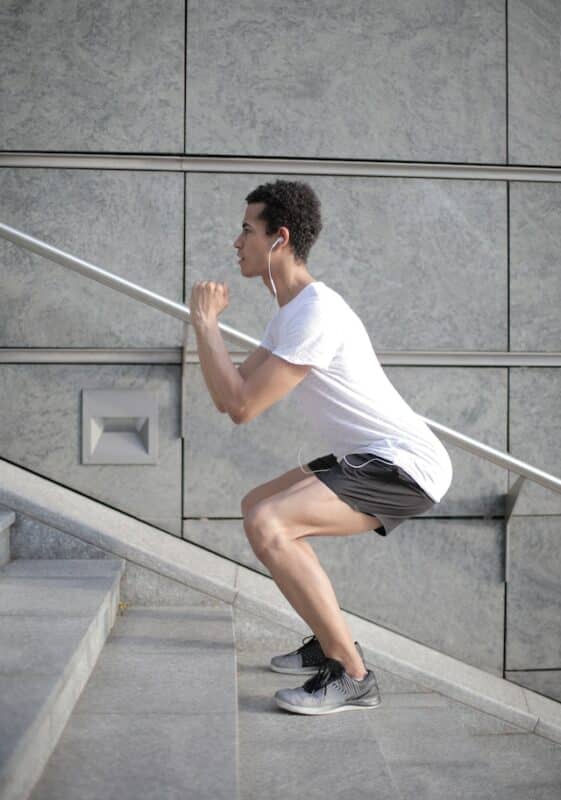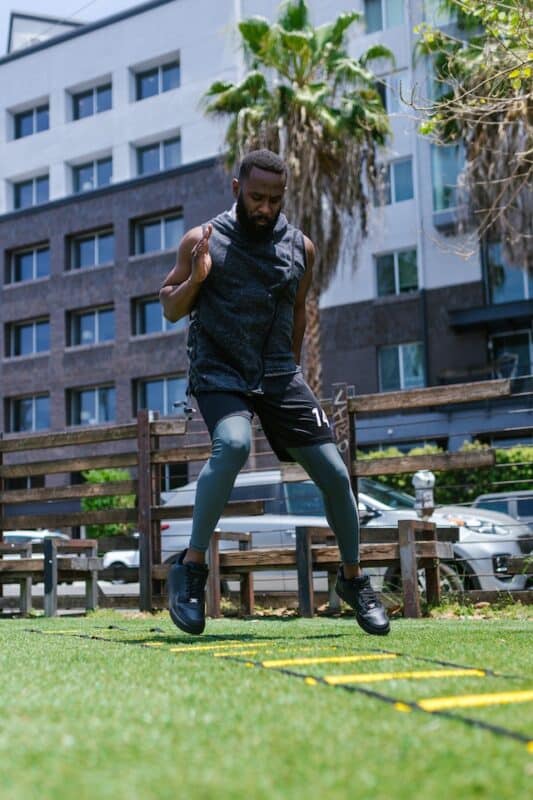
Contents
Shin splints, medial tibial stress syndrome, issues with your ankle and foot muscles… a lot can wrong so let’s find the fixes
Shins are pretty important. Remember those… what are they called, shin pads in P.E.? Oh right, you’re actually into football and even though it’s unlikely you have the memory of a newt. I, however, had forgotten about these shin pads.
But I think I know why…
Firstly, I’m not into football. Secondly (and far more importantly) I’m a runner, so I have to look to other ways to protect my shins. Namely, using every exercise I can to prevent shin splints, shin splint pain (obviously) and lower leg pain in general.
Shin muscles can be surprisingly prone to a range of injuries. From a stress fracture to shin splints, issues with your calf muscles and aching in your shin bone, it’s important to know and understand them all to hammer home the importance of strengthening the area.
So, let’s try and do some of that learning now.


Why? What even are they?
Shin splints are defined well by Medical News Today, ”Shin splints are a throbbing pain along the inner front of the lower leg, where the muscles attach to the shinbone. The pain usually concentrates between the knee and the ankle.”
In essence, the more experienced runners, just like muscle building for weight lifters, will have strengthened areas when it comes to bodily components.
New runners, however, aren’t used to this stress load, are yet to engage with shin strengthening exercises, and will therefore be far more likely to experience shin pain.
Simple… but not always as easy to avoid as they are to understand.
How do I stop them?
Improving calf strength, abductor strength and strengthening hip muscles will all help to take the load off of your shins when running. From a seated shin stretch to feet shoulder width apart toe touches, feet flat, toes pointed straight ahead, any exercise that targets the above in some way will be beneficial. It’s about increasing durability, and flexibility and strengthening key areas to avoid strain-based weaknesses.
Shin splint stretches weren’t always effective because they targeted the tibias anterioris, the prior area believed to be responsible, you can still read some dated exercises so look for current blogs like this.
I’m still suffering…
If any of the basic exercises fail to work for you then make sure to compile a precise routine with the best exercises available to you. You don’t need a physical therapist, you just need to do what a physical therapist might recommend, and all of the info is online in abundance for you to do so.
Shin exercises are usually low maintenance too so you won’t have to worry about weird and awkward positioning, further injury or investing in resistance bands or benches, etc.
Conclusion
Shin splints are a common enemy in a beginner runner’s new world. It’s not nice being halted so immediately but in order for you to carry on running and feel the benefits of a fitness lifestyle you should do all that you can to combat the issues.
So what are you waiting for?
FAQs
What if the pain is in one foot?
Then there are more specific exercises that can target your shins and feet out there.